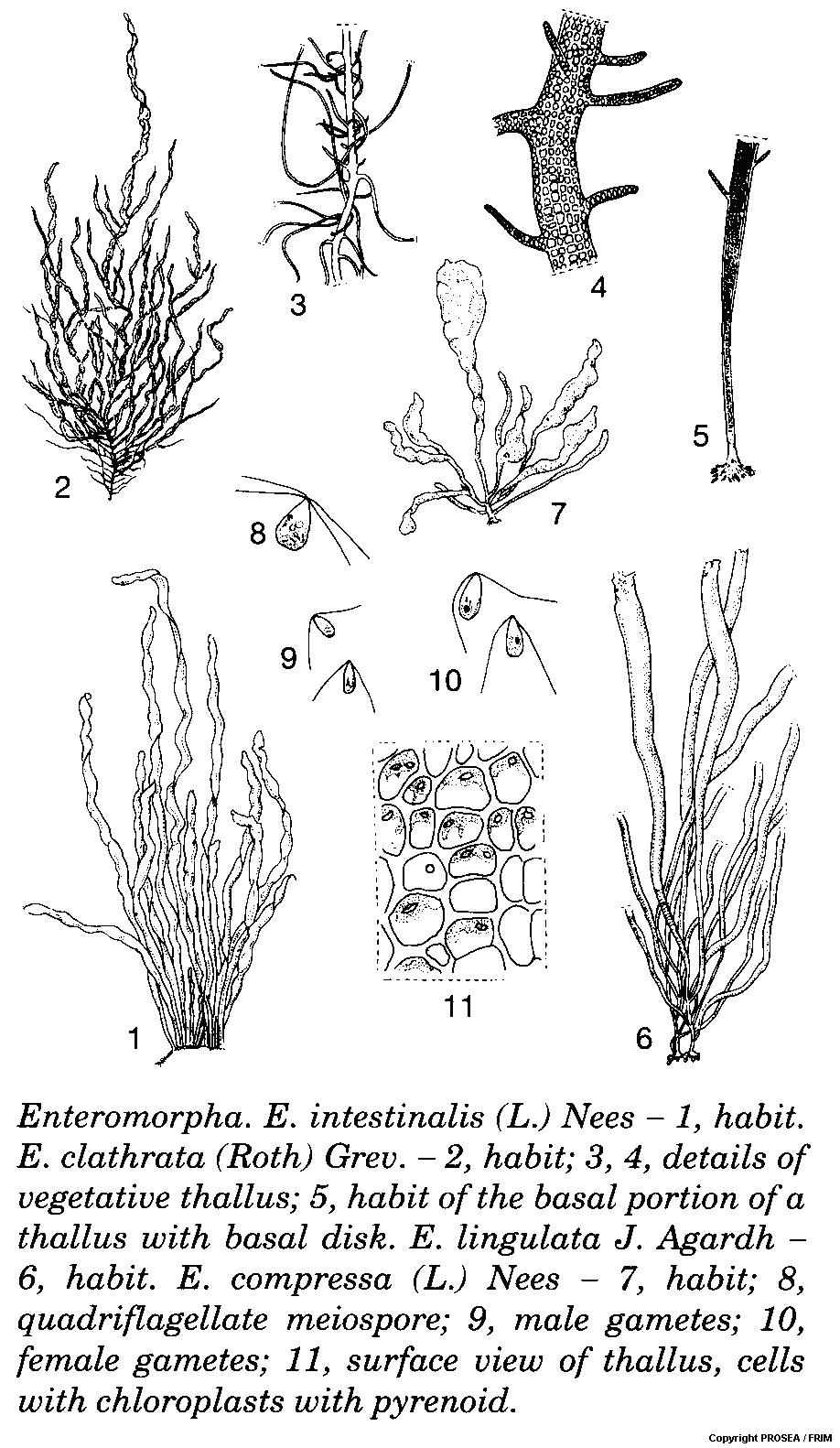Enteromorpha intestinalis (L.) Nees
Family
Ulvaceae
Synonyms
Ulva intestinalis L.
Vernacular Names
| English | Green aonori. |
Geographical Distributions
Enteromorpha is a common genus of green algae distributed widely in Southeast Asia waters.
Description
Enteromorpha intestinalis is a thalli that can grow up to 6-20(-50) cm long and with a short stipe that is attached by discoid holdfast. It forms bright to yellowish bushes that usually unbranched, constricted and/or contorted, erect, with tubular fronds, tapering below and inflated above.
The cells are small and polyhedral or rounded in surface view. They are 8-18 µm in diametre, arranged irregularly, filled with spherical to oval parietal chloroplast and often having a cap-like appearance and with numerous large starch grains. The pyrenoids are 1 per cell.
Ecology / Cultivation
Several Enteromorpha spp. tolerate a wide range of salinity and some can even survive in almost pure freshwaters. They occur often in brackish estuaries, sandy areas with freshwater seepage and in rock pools. They are also common inhabitants of upper intertidal areas, where they attach to rocks and coral pieces exposed to air during low tide. They also can be found lying loose, especially in sheltered habitats. The cell walls of estuarine E. intestinalis are thinner and hence stretchier than those of marine rockpool plants of the same species, allowing the cells to swell with the influx of water in low-salinity conditions and to decrease again in the presence of waters of higher salinity.
Line Drawing / Photograph
References
- Plant Resources of South-East Asia No. 15(1): Cryptogams: Algae.



